Maria stared out the window, bored out of her mind.
As her history teacher droned on about yet another irrelevant date, her mind started to wander. What was the point of memorising facts if she never understood why things happened?
Inquiry-based learning, a technique that fuels the natural human desire to make sense of the world, can be a great teaching method to help students like Maria.
In this article, we'll take a closer look at what inquiry-based learning is and provide some tips for teachers to incorporate it in the classroom.
Table of Contents
- What is Inquiry-based Learning?
- Inquiry-based Learning Examples
- The 4 Types of Inquiry-based Learning
- Inquiry-based Learning Strategies
- Key Takeaways
- Frequently Asked Questions
What is Inquiry-based Learning?
"Tell me and I forget, show me and I remember, involve me and I understand."
Inquiry-based learning is a teaching method that places students at the centre of the learning process. Rather than being presented with information, the students will actively seek it through exploring and analysing evidence on their own.
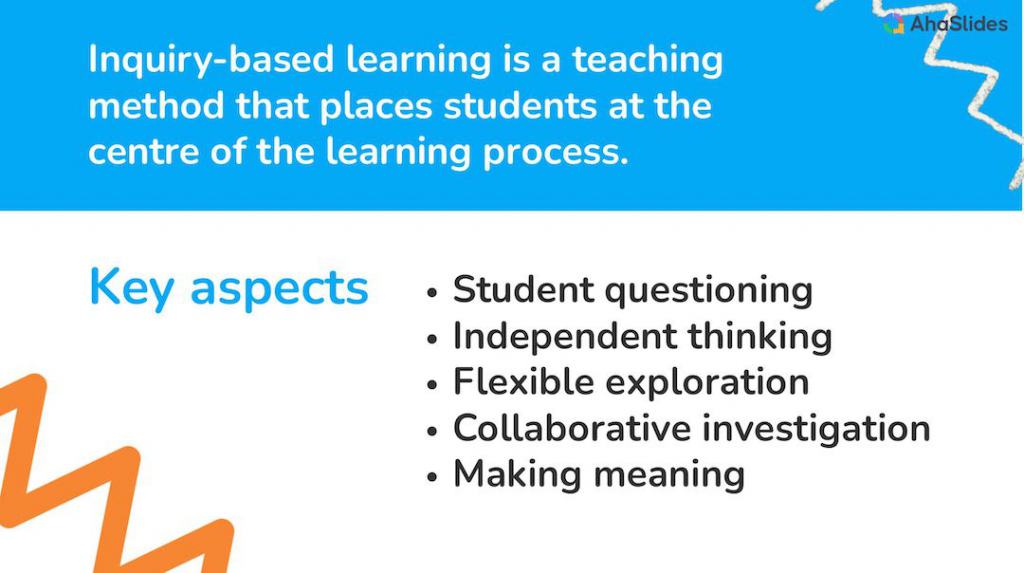
Some key aspects of inquiry-based learning include:
• Student questioning: Students play an active role in questioning, analysing, and problem-solving instead of just receiving information. Lessons are structured around compelling, open-ended questions that students investigate.
• Independent thinking: Students construct their own understanding as they explore topics. The teacher acts more as a facilitator than a lecturer. Autonomous learning is emphasised over step-by-step instruction.
• Flexible exploration: There may be multiple pathways and solutions for students to discover on their own terms. The exploration process takes precedence over being "right".
• Collaborative investigation: Students often work together to examine issues, gather and evaluate information, and draw evidence-based conclusions. Peer-to-peer learning is encouraged.
• Making meaning: Students engage in hands-on activities, research, data analysis or experimentation to find answers. Learning revolves around building personal understanding instead of rote memorisation.
Inquiry-based Learning Examples
There are various classroom scenarios that can incorporate inquiry-based learning into students' study journeys. They give students responsibility over the learning process through questioning, researching, analysing, collaborating and presenting to others.
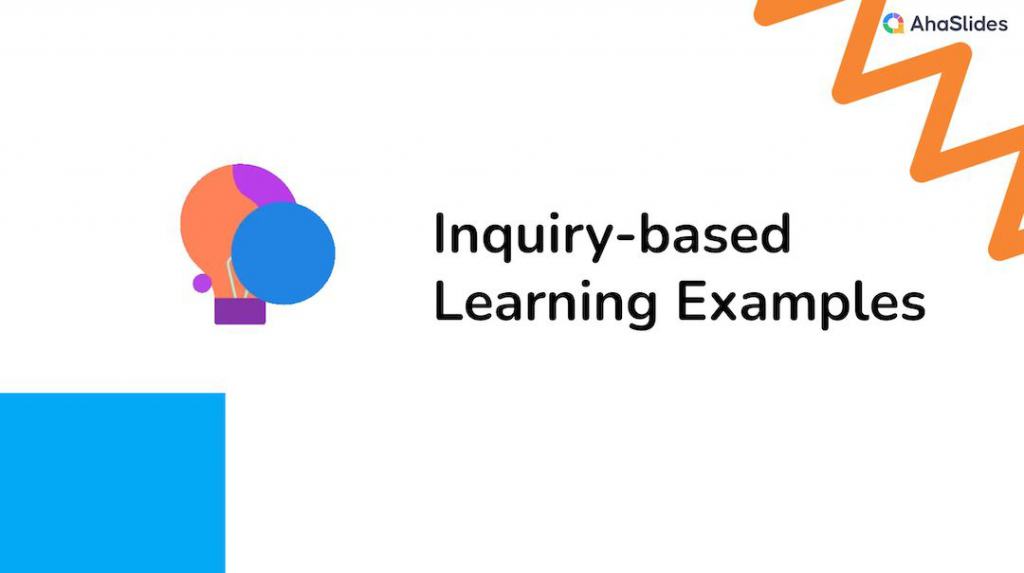
- Science experiments - Students design their own experiments to test hypotheses and learn the scientific method. For example, testing what affects plant growth.
- Current events projects - Students pick a current issue, conduct research from varied sources, and present possible solutions to the class.
- Historical investigations - Students take on the roles of historians by looking at primary sources to form theories about historical events or time periods.
- Literature circles - Small groups each read a different short story or book, then teach the class about it while posing discussion questions.
- Field research - Students observe phenomena outside like ecological changes and write scientific reports documenting their findings.
- Debate competitions - Students research both sides of an issue, form evidence-based arguments and defend their positions in a guided debate.
- Entrepreneurial projects - Students identify problems, brainstorm solutions, develop prototypes and pitch their ideas to a panel as if on a startup TV show.
- Virtual field trips - Using online videos and maps, students chart an exploration path to learn about distant environments and cultures.
The 4 Types of Inquiry-based Learning

If you want to give your students more choice and freedom in their learning, you might find these four models for inquiry-based learning helpful.
💡 Confirmation Inquiry
In this type of inquiry-based learning, students explore a concept through hands-on activities to test and support an existing hypothesis or explanation.
This helps students solidify their understanding of the concept led by the teacher. It mirrors the scientific process in a directed way.
💡 Structured Inquiry
In structured inquiry, students follow a provided procedure or set of steps given by the teacher to answer a teacher-posed question through experimentation or research.
It provides scaffolding to guide student investigation with some teacher support.
💡 Guided Inquiry
With guided inquiry, students work through an open-ended question using teacher-provided resources and guidelines to design their own investigations and conduct research.
They are given resources and guidelines to design their own exploration. The teacher still facilitates the process but students have more freedom than structured inquiry.
💡 Open-ended Inquiry
Open inquiry allows students to identify their own topic of interest, develop their own research questions, and design procedures to collect and analyse data to answer self-directed questions.
This mimics real-world research most authentically as students independently drive the entire process from identifying topics of interest to developing questions with minimal teacher involvement. However, it requires the most developmental readiness from students.
Inquiry-based Learning Strategies
Want to experiment with inquiry-based learning techniques in your classroom? Here are some tips to seamlessly integrate it:
1. Start with compelling questions/problems
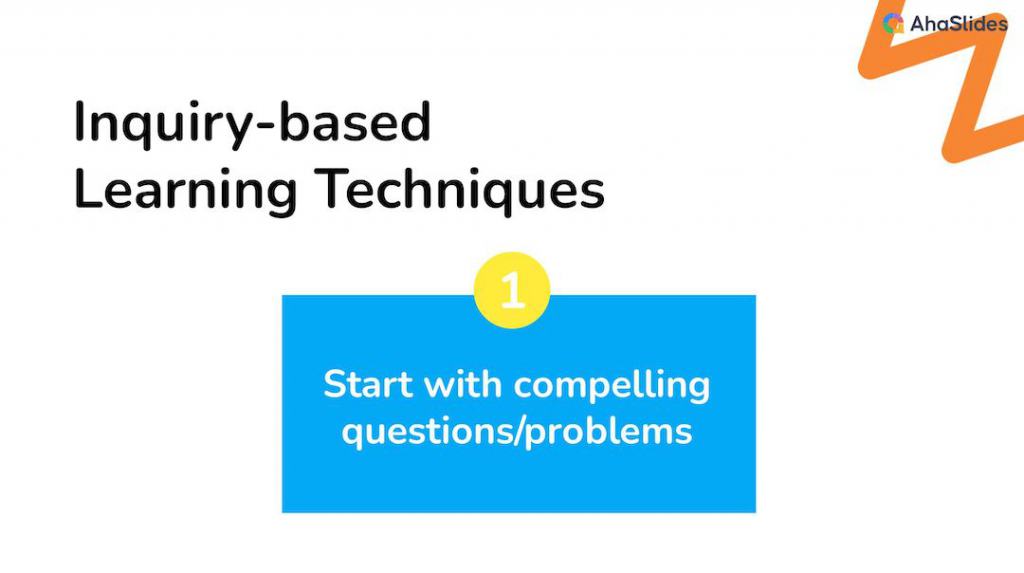
The best way to start an inquiry-based lesson is to ask an open-ended question. They trigger curiosity and set the stage for exploration.
To let the students better grasp the concept, craft some warm-up questions first. It can be any topic but the point is to kickstart their brains and enable the students to answer freely.
Ignite Boundless Ideas with AhaSlides
Empower student engagement with AhaSlides' open-ended feature. Submit, vote and conclude easily🚀
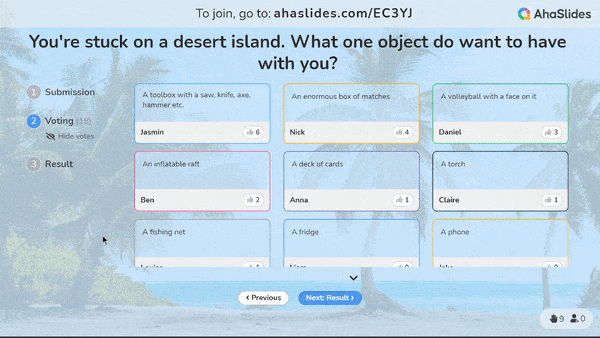
Keep in mind to be flexible enough. Some classes require more guidance than others so divert your strategies and adjust to keep the inquiry going.
After letting the students get used to the format, time to move to the next step👇
2. Allow time for student research

Give students opportunities to investigate resources, conduct experiments, and have discussions to answer their questions.
You can provide guidance on skills along the way like forming hypotheses, designing procedures, collecting/analysing data, drawing conclusions, and peer collaboration.
Encourage critique and improvement and let students revise their understanding based on new findings.
3. Foster discussion
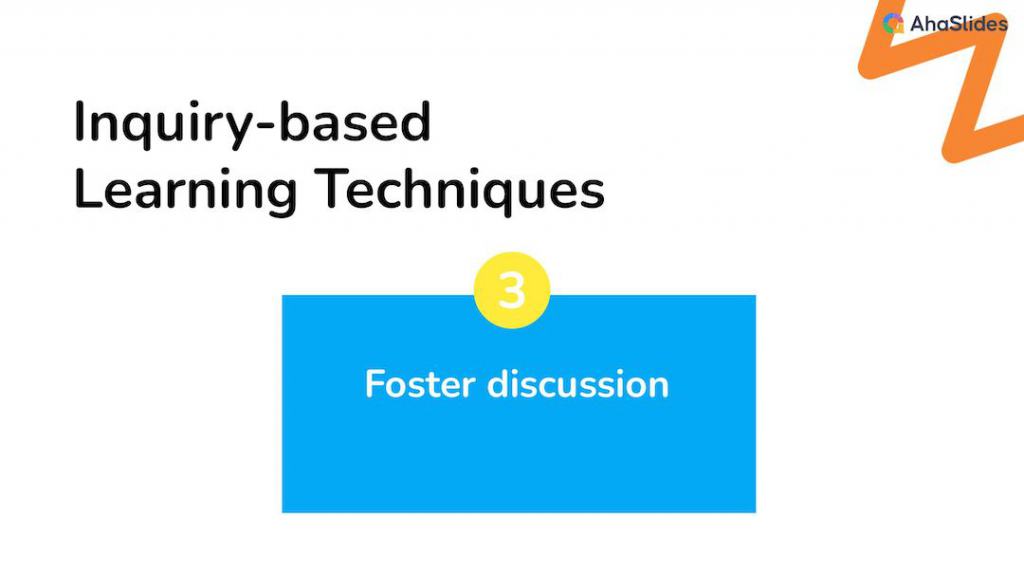
Students learn from each other's perspectives through sharing discoveries and providing constructive feedback. Encourage them to share ideas with their peers and listen to different views with an open mind.
Emphasise process over product - Guide students to value the journey of inquiry over just final outcomes or answers.
4. Check in regularly
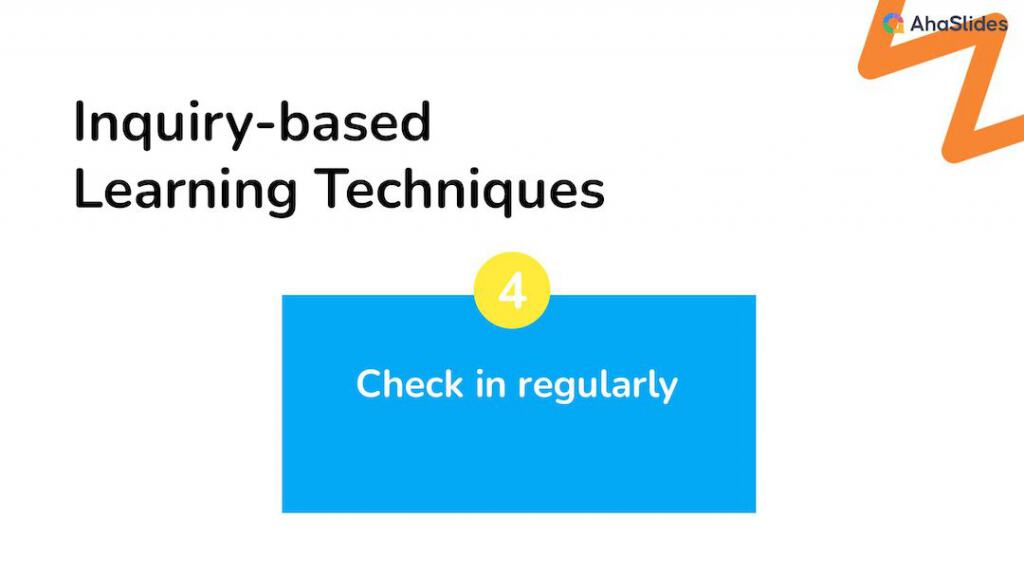
Assess the students' understanding of evolving knowledge through discussions, reflections, and works-in-progress to shape instruction.
Frame inquiries around problems relevant to students' lives to make real-world connections and boost engagement.
After the students have come to some conclusions, ask them to present their findings to others. This practices communication skills as you give them autonomy on the students' work.
You can let them work with different presentation apps to present the findings creatively, for example, interactive quizzes or reenactment of historical figures.
5. Make time for reflection
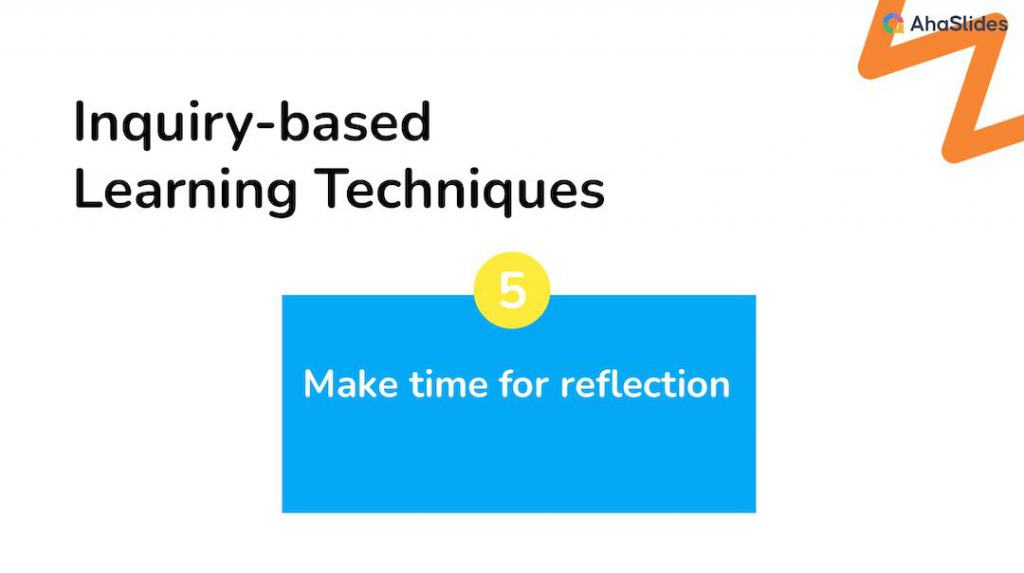
Having students reflect individually through writing, discussions in groups, or teaching others is an essential part of helping inquiry-based lessons stick.
Reflecting allows them to think about what they have learned and make connections between different aspects of the content.
For the teacher, reflections offer insight into student progress and comprehension that can inform future lessons.
Key Takeaways
Inquiry-based learning sparks curiosity and empowers students to drive their own exploration of intriguing questions, problems, and topics.
Though the road may twist and turn, our role is to support each student's personal discovery - be it through gentle suggestions or by simply staying out of the way.
If we can light that spark within each learner and fan its flames with freedom, fairness and feedback, there are no limits to what they may achieve or contribute.
Frequently Asked Questions
What are the 4 types of inquiry-based learning?
The 4 types of inquiry-based learning are confirmation inquiry, structured inquiry, guided inquiry and open-ended inquiry.
What are examples of inquiry-based learning?
Examples: students examine recent happenings, form theories and propose solutions to better understand complex issues, or rather than following a recipe, students design their own methods of exploration with guidance from the teacher.
What are the 5 steps of inquiry-based learning?
The steps include engaging, exploring, explaining, elaborating, and evaluating.








